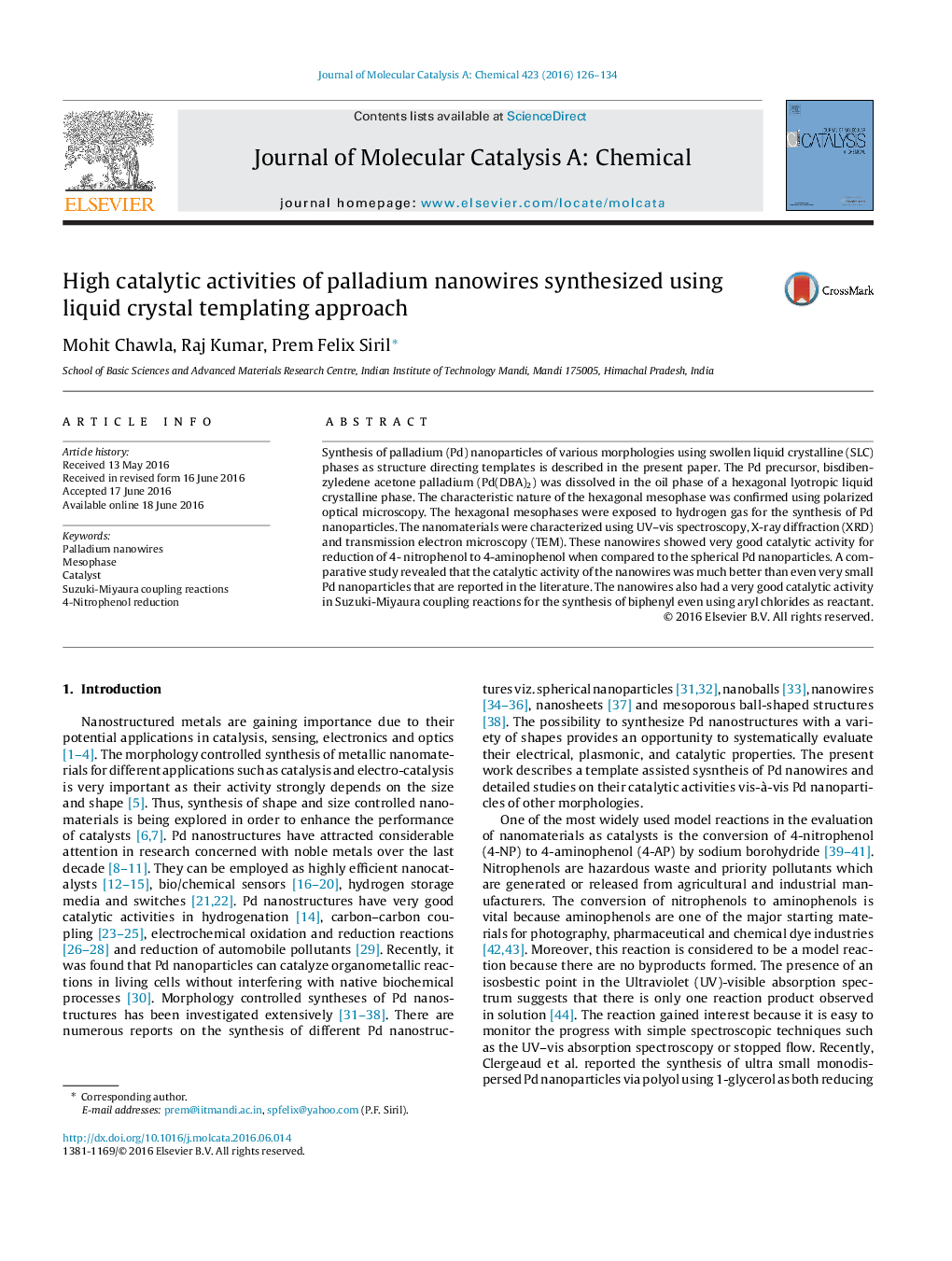| Article ID | Journal | Published Year | Pages | File Type |
|---|---|---|---|---|
| 64532 | Journal of Molecular Catalysis A: Chemical | 2016 | 9 Pages |
•Morphology controlled synthesis of Pd nanoparticles using lyotropic liquid crystals.•Pd nanowire was synthesized using cetyltrimethyl ammonium bromide as surfactant.•Higher catalytic activity of Pd nanowire over others for p-nitrophenol reduction.•C-C coupling reaction of arylchloride was achieved by using Pd nanowire catalyst.
Synthesis of palladium (Pd) nanoparticles of various morphologies using swollen liquid crystalline (SLC) phases as structure directing templates is described in the present paper. The Pd precursor, bisdibenzyledene acetone palladium (Pd(DBA)2) was dissolved in the oil phase of a hexagonal lyotropic liquid crystalline phase. The characteristic nature of the hexagonal mesophase was confirmed using polarized optical microscopy. The hexagonal mesophases were exposed to hydrogen gas for the synthesis of Pd nanoparticles. The nanomaterials were characterized using UV–vis spectroscopy, X-ray diffraction (XRD) and transmission electron microscopy (TEM). These nanowires showed very good catalytic activity for reduction of 4- nitrophenol to 4-aminophenol when compared to the spherical Pd nanoparticles. A comparative study revealed that the catalytic activity of the nanowires was much better than even very small Pd nanoparticles that are reported in the literature. The nanowires also had a very good catalytic activity in Suzuki-Miyaura coupling reactions for the synthesis of biphenyl even using aryl chlorides as reactant.
Graphical abstractFigure optionsDownload full-size imageDownload high-quality image (132 K)Download as PowerPoint slide
